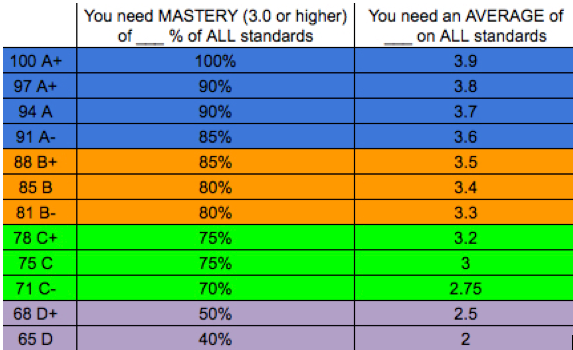

The thought of an ungraded classroom is misleading. This notion has led educators to explore different modes of grading that measure students’ knowledge efficiently and are deemed acceptable by the greater educational community (Potts, 2010). Potts is arguing that the traditional letter grade system relies too heavily on points and not enough on the information being learned.

This is a difference between a B and C for students, which may negatively impact their overall GPA in school (2010). Glenda Potts, a school teacher, writes that it is hard for her to discern what work should be given an 80%, rather than a 79%. Understanding why educators evaluate students is a key aspect to exploring what these grades should look like.

Grades are both a motivator and a way for teachers to reflect on their teaching skills (Anderson, 2018 Lehman, De Jong, & Baron, 2018). As schools experiment with standards-based grading, educators will find methods that best fit their students and reflect their students’ successes.īecause of the reliance on the evaluation of students in our educational system, the traditional letter grade system is a simple, easily understood method. On a report card, success in a concept may be represented by a “+,” “✓,” “O,” or a number on a scale (Colby, 1999). Because standards-based grading is an idea for an overall different grading system, there is no correct way to implement it within the classroom. Students then receive feedback for each concept. However, in a standards-based system, a student would receive a marking for each category in geometry, such as vocabulary and notation, coordinate geometry, and properties of circles. For example, in Honors Geometry, students would traditionally receive an A, B, or C. Grades are broken down into individual concepts and teachers evaluate students based upon those specific skills. Moreover, standards-based grading transitions to a grading system that is closely aligned to the standards that teachers are teaching in schools (Potts, 2010). Standards-based grading is a concept, rather than a specific system, like the system we know as “traditional grading”.

One way that schools have tried to achieve a gradeless education is through the utilization of a standards-based grading system. Schools have implemented ungraded classrooms across America, but their effectiveness and credibility are up for debate. Instead of emphasizing letters, percentages, or any other variation of scores, educators are evaluating students based upon skill achievement. Some educational professionals have entertained the notion of an ungraded classroom. With the emphasis put on grades, students are prioritizing high scores over learning the source material, itself. What does a 1300 on the SAT really mean? How does that compare when achieving a 28 on the ACT? While these exams are broad examples of how student assessment is difficult to meaningfully measure, there are ordinary examples found in classrooms today, including traditional letter grading. Unfortunately, the variation between these exams and their grading scales produces inconsistent results. PSSAs, SATs, FourSights, ACTs, and other standardized tests create a learning environment driven by test scores.


 0 kommentar(er)
0 kommentar(er)
